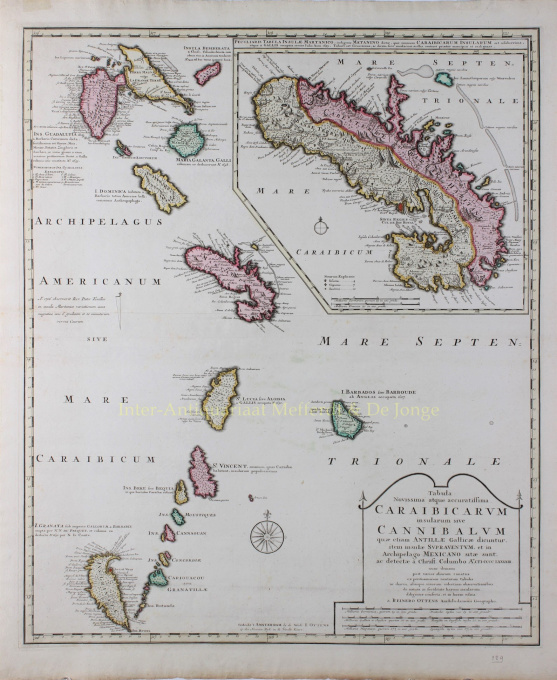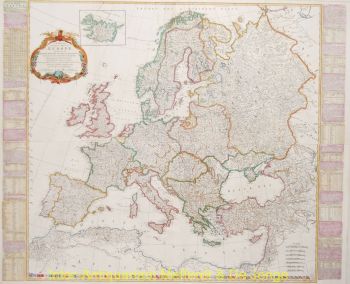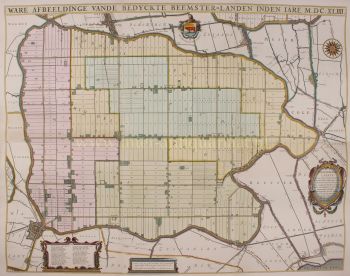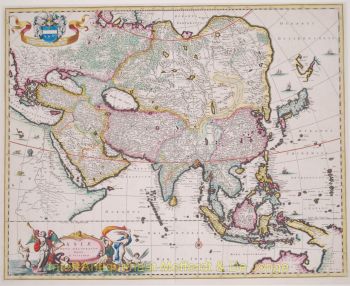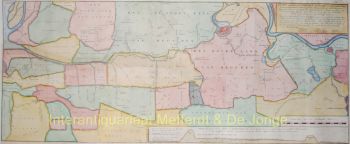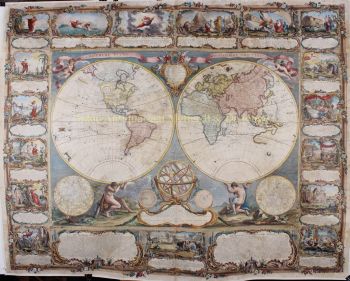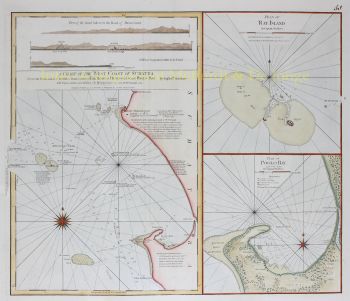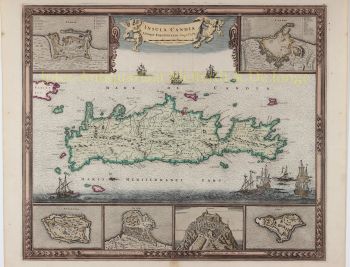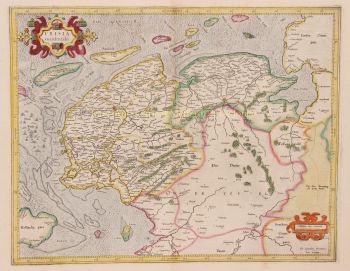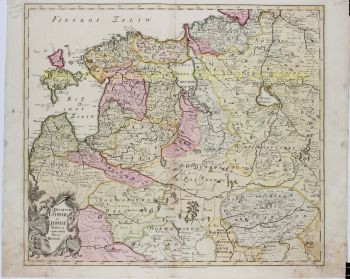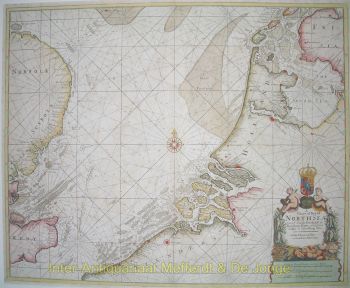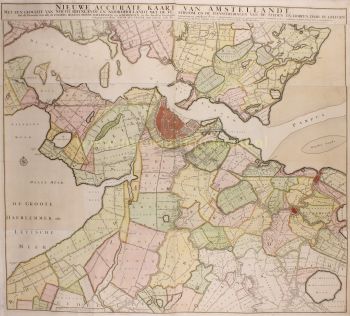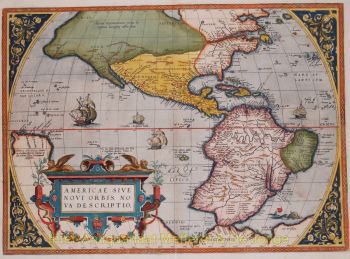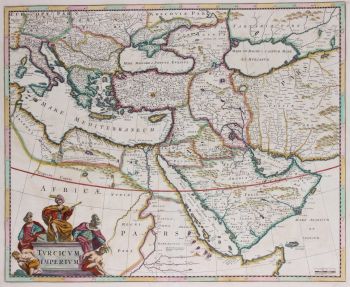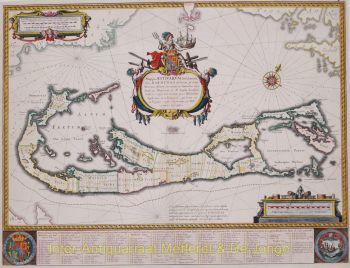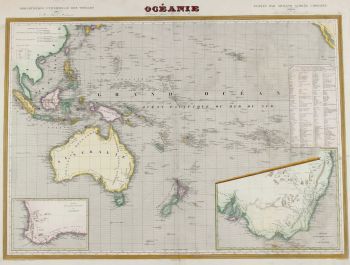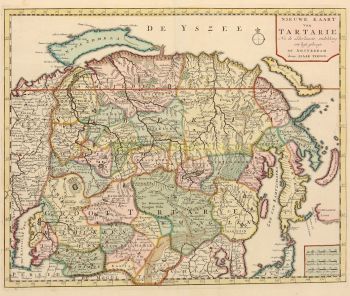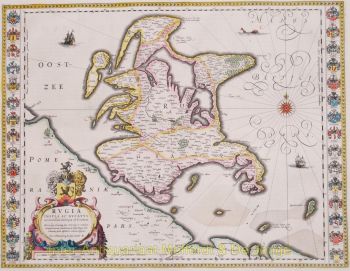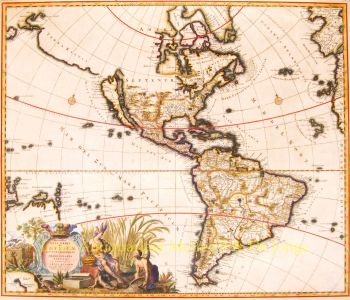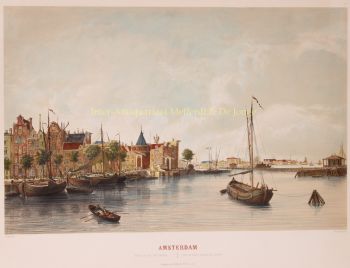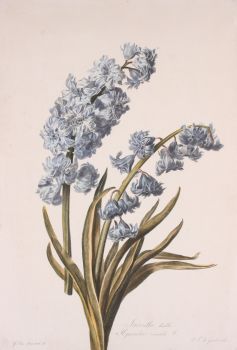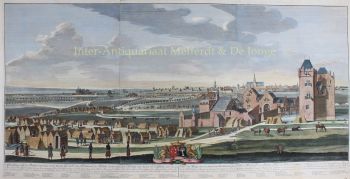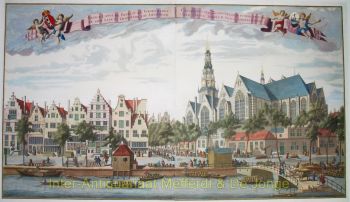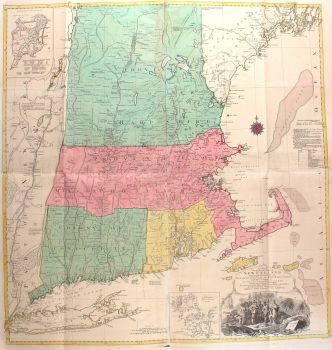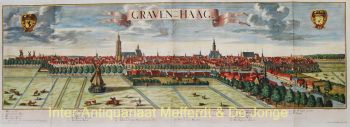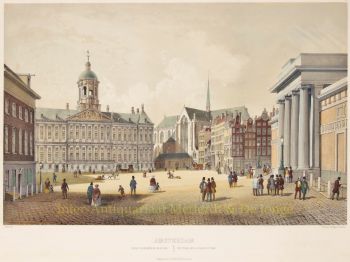Caribe, Islas de Barlovento 1719 - 1723
Joachim Ottens
€ 975
Inter-Antiquariaat Mefferdt & De Jonge
- Sobre la obra de arteDETAILED MAP OF THE WINDWARD ISLANDS “Tabula novissima atque accuratissima Caraibicarum insularum sive Cannibalum : quae etiam Antillae Gallicae dicuntur, item insulae Supraventum, et in Archipelago Mexicano sitae sunt, ac detectae a Christ. Columbo Ao. MCCCCLXXXXIII” [Latest and most accurate map of the Caribbean or Cannibal Islands: also called the French Antilles, or Windward Islands, located in the Archipelago of Mexico, which were discovered by Christopher Columbus in the year 1493.] Copper engraving “after the observations of skilful sailors” made by Reinier Ottens and printed by the Window of Joachim Ottens in Amsterdam 1719-1723. With original hand colouring. Size: 58 x 48 cm. Detailed map of the Windward Islands from Guadeloupe south to Grenada, including the small islands of Mustique (Grenadines) and Ronde Island (Grenada), with a large inset map of Martinique. Grenada has been moved north and is shown west of Carriacou island, in order that it fits on the sheet. Apart from topographical information, there are some notes of historic interest. According to the map tens of thousands live on Martinique (“Matanino as the locals call it and occupied by the French since July 1635”) and its tobacco is of the best quality. La Désiderade island was discovered by Christopher Columbus in 1493 on his second journey to America. “The island of Guadeloupe, called Carukeira [The Island of Beautiful Waters] by the locals, is very fertile with rice, maize, potatoes, ginger and sugar of different qualities. It is crowded with all types of parrots.” The island of Barbados has been occupied by the English in 1627. “St. Vincent, where the Caribs live, is most populated.” Price: Euro 975,-
- Sobre el artista
Joachim Ottens (1663 - 1719) y sus hijos Renier (1698 - 1750) y Joshua (? - 1765) fueron destacados libreros y editores de mapas holandeses.
El período de 1630 a 1700 fue la "edad de oro" de la cartografía holandesa. Los mapas se percibían como obras de arte, el trabajo manual era muy valorado, el grabado estaba al más alto nivel, pero desde el punto de vista de la precisión geográfica, los mapas de los maestros holandeses eran inferiores a los mapas producidos en Alemania, Francia y otros países europeos. .
Joachim, el fundador de la firma Ottens, nació en Ámsterdam e inicialmente trabajó como grabador de cobre. En 1711 fundó su propia firma dedicada al negocio editorial e impreso, vendiendo libros, mapas, postales e ilustrándolos.
Aunque Joachim murió unos años después, sus hijos, Renier y Joshua, continuaron con éxito el negocio de su padre. La contribución más significativa a la cartografía de la familia Ottens fueron los enormes atlas de varios volúmenes que hicieron por encargo, como el Atlas Major. Algunas ediciones de Atlas se componen de más de 800 mapas emitidos por separado.
¿Está interesado en comprar esta obra de arte?
Artwork details
Related artworks
- 1 - 2 / 2
Artista Desconocido
A large wall map of Asia by Nicolas de Fer 1647 - 1720
Precio a consultarZebregs & Röell - Fine Art - Antiques
1 - 4 / 24- 1 - 4 / 12

